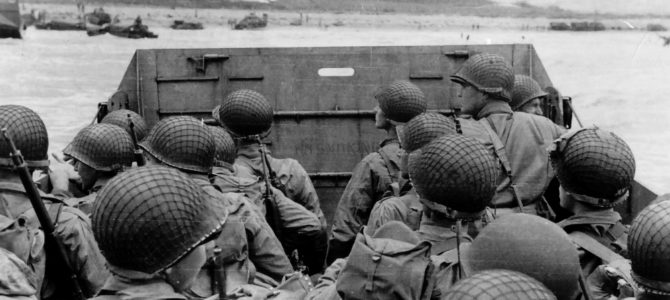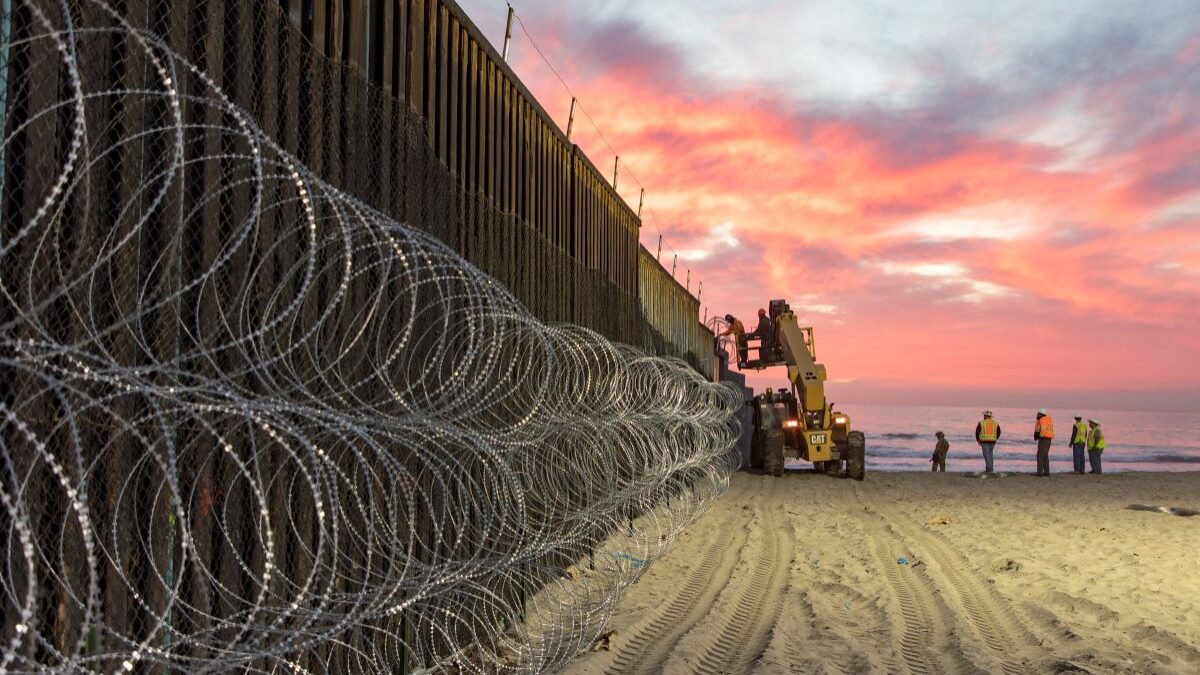
On November 10, 1942, Winston Churchill remarked that the Allied victory at the Second Battle of El Alamein was “the end of the beginning.” It was a start; the first major win against the European Axis powers in more than a year. Hope was in the air, but further trials remained.
It would be another 574 days until Operation Neptune—the codename for the initial phase of the amphibious Allied invasion of Normandy, France. When it came at last, “D-Day” would seal the fate of Adolf Hitler. For the fascist Nazi tyranny that had held most of Europe hostage for five years, it was now—finally—the beginning of the end.
Churchill and President Franklin Delano Roosevelt long recognized that a breakthrough in the heart of Europe was needed to take the fight to the Nazis. For a time, Churchill favored cleverly sneaking the Allies into Nazi territory “through the back door” of the Balkans and beating the Soviets to Germany. This was later tabled in favor of a daring attack across the English Channel.
Although German leaders expected an attack to come somewhere in the Pas-de-Calais region, the invasion took place 200 miles west of Calais. The Allies successfully deceived the Nazis until the assault was upon them.
The D-Day attack remains the largest seaborne invasion in history. The Normandy landings on June 6, 1944, followed the triumph of the Anzio campaign, which ended with the capture of Rome a day earlier.
Designated as the supreme allied commander in December 1943, Dwight D. Eisenhower’s moving final message to the men of D-Day is often overlooked in the study of American history. On the morning of the attack, Eisenhower addressed the soldiers of the Allied Expeditionary Force:
You are about to embark upon the Great Crusade, toward which we have striven these many months. The eyes of the world are upon you. The hopes and prayers of liberty-loving people everywhere march with you. In company with our brave Allies and brothers-in-arms on other Fronts, you will bring about the destruction of the German war machine, the elimination of Nazi tyranny over the oppressed peoples of Europe, and security for ourselves in a free world. … The tide has turned! The free men of the world are marching together to Victory! I have full confidence in your courage and devotion to duty and skill in battle. … Good luck! And let us beseech the blessing of Almighty God upon this great and noble undertaking.
More than 6,900 ships and landing craft escorted Allied troops straight into the jaws of death. Strewn across a 50-mile expanse of the Normandy coastline, 156,000 courageous men took the first steps in the liberation of a continent. It was just as Eisenhower had declared earlier that morning—a united force of free men, marching together in the defense of liberty and for the survival of the Western world.
British troops assaulted the beach sectors codenamed Gold and Sword. The Canadian 3rd Infantry streamed onto Juno beach, penetrating farther into France than any other Allied division on D-Day. Representing the United States of America, more than 56,000 servicemen stormed the sandy beachheads of the Utah and Omaha sectors. The Americans on Omaha Beach faced particularly intense resistance and suffered around 2,000 casualties—the largest price to be paid that day.
Along with the men onshore, 15,500 parachuted into northern France with the paratroopers of the U.S. 82nd and 101st Airborne Divisions. More than 7,500 additional troops from the British 6th Airborne Division were dropped in behind enemy lines.
Led by Lt. Colonel James Rudder, 190 U.S. Army Rangers of the 2nd Ranger Battalion scaled the treacherously steep promontory cliff of Pointe du Hoc. Plunging their Ranger daggers into the cliff face, they slowly climbed up rope ladders tenuously secured by grappling hooks. The fire raining down on them from Nazi defenses was relentless. But the Rangers made it to the top.
Once there, they took out deadly guns trained on the men embarking on the beaches below and held the vital observatory casemates overlooking Utah and Omaha. After two days of brutal struggle, only 90 rangers could continue fighting.
The most recent and accurate modern study reports that 4,390 Allied men died on D-Day. Although the toll was lower than planners had feared, the number is still shocking. Churchill had remarked to his wife the night before the attack, “Do you realize that by the time you wake up in the morning 20,000 men may have been killed?” Compared to predictions given beforehand, the relatively low casualties incurred during Operation Neptune is a testament to the meticulous planning of Allied command as well as the remarkable fighting prowess of the troops on the ground.
It’s hard to imagine enduring even a few minutes of what the Allied Expeditionary Force experienced on June 6, 1944. Most men who disembarked the landing craft that day were in their early 20s. By all rights, they should have been working at the local hardware store, helping their fathers plant crops, or enjoying the summer break from college classes. Instead, they were 5,000 miles away from home at the most dangerous place on earth.
Every day, we mourn the passing of more these brave men. Now in their mid to late 90s, there will soon come a time when none remain among us. We must never forget their heroic service and sacrifice on that fateful day 75 years ago. We must cherish their memory, thank God for them in our prayers, and make sure that future generations know of their increasingly uncommon valor.
The soldiers of D-Day represent mankind at its most noble, most valiant, and most selfless. They truly were the Greatest Generation. Above all, they were John 15:13 in action: “Greater love hath no man than this, that a man lay down his life for his friends.”









